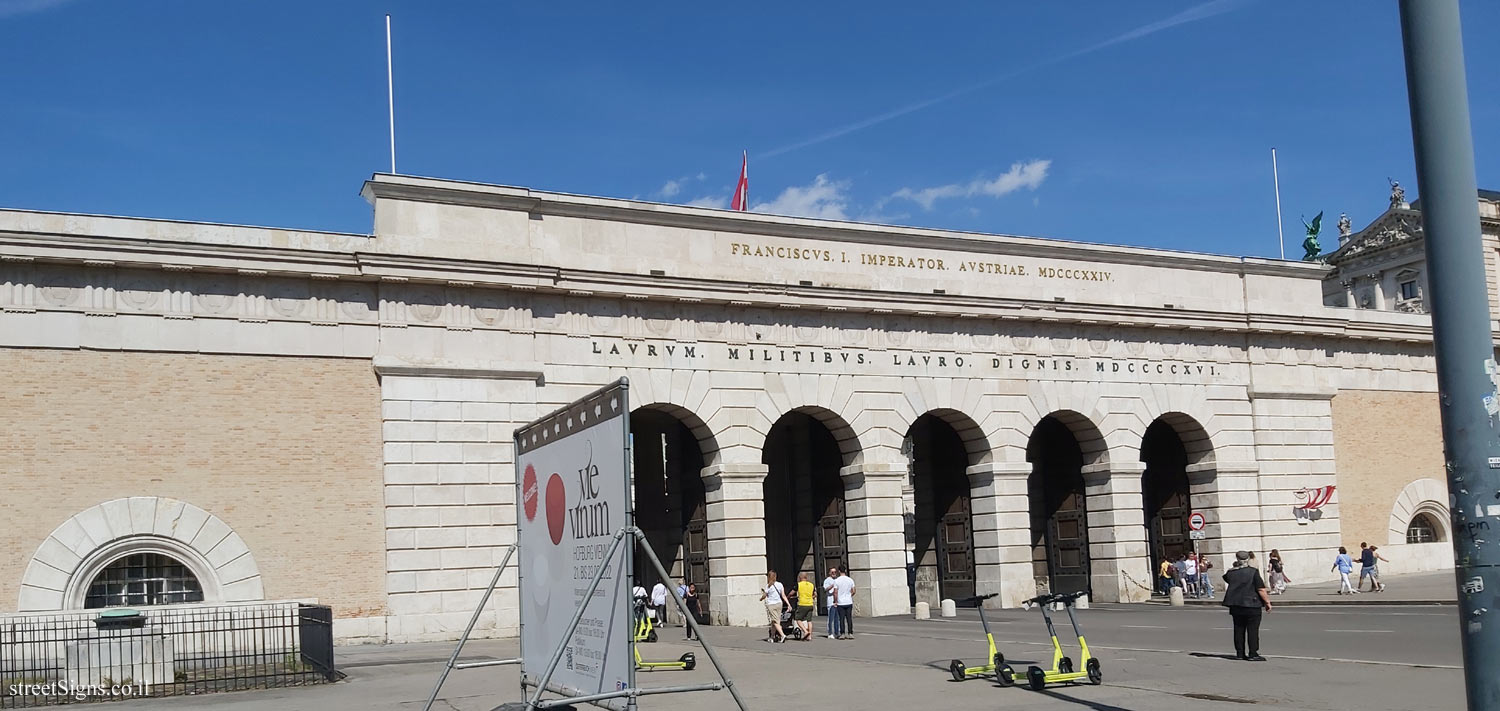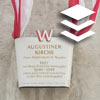Sign number 48d from the "Vienna - the city introduces itself" series of signs, an initiative established in 1956 as part of the Vienna Festival, which shows significant places in the city. The serial number is displayed at the bottom of the sign.
Above the sign are 4 flags of Austria, which is a hallmark of the project, and the possibility of recognizing it from a distance
 Click for a larger image
Click for a larger image Note that this sign is slightly different from other signs from the same series - the text appears in it in two languages (German and English), the phrase "Vienna - A city introduces itself" does not appear at the bottom, but the initiating factor - the Vienna Tourist Board.
The sign is on the Burgtor Gate, the outer gate of the castle wall that was erected in the 17th century when Vienna was under siege. In the 18th century, after the victory at the Battle of Leipzig over Napoleon, a victory gate was built on the site.
The Victory Gate was designed by Luigi Cagnola and executed by Peter Nobile.
The gate was photographed that day
 Click for a larger image
Click for a larger image The inscriptions appear on the Victory Gate:
FRANSICUS I. IMPERATOR AUSTRIAE MDCCCXXIV .
LAURUM MILITIBUS LAURO DIGNIS MDCCCCXVI
Which means:
Franz I, Emperor of Austria 1824,
The soldier worthy of laurel wreaths 1916
Another text was found on the Gate
ERRICHTET 1824
ZUR ERINNERUNG AN DIE
VÖLKERSCHLACHT BEI LEIPZIG
NACH DEM ENTWURF VON
PETER VON NOBILE
Built in 1824
to commemorate the Battle of the
Nations near Leipzig based
on a design by
Peter von Nobile
 Click for a larger image
Click for a larger image

 Click for a larger image
Click for a larger image  Click for a larger image
Click for a larger image  Click for a larger image
Click for a larger image  Click for all signs belonging to Vienna - A city introduces itself
Click for all signs belonging to Vienna - A city introduces itself
 321 Meter |
321 Meter |  375 Meter |
375 Meter |  377 Meter |
377 Meter |  384 Meter |
384 Meter |  385 Meter
385 Meter